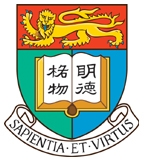Global migration
This course is not offered for study in the current academic year.
Course description
Human migration has been growing in volume. Any analysis of society is incomplete without an examination of migration. This course provides an introductory overview of the field of migration studies. To understand human migration, we will first discuss why people move. We will also review general theories of immigrant adaptation. Theoretical frameworks for understanding migration reviewed in this course range from classic migration theories of the Chicago School to the recent institutional approach to migration. We will then explore how immigrant entrepreneurship is related to the adaptation and survival strategies taken by immigrants.
In particular, we will focus on how immigrant resources to start their businesses have impacts on ethnic communities. Finally, we will address the issue of migration and citizenship.
Course learning outcomes
- To understand major concepts and theories in the field
- To evaluate critically the development of the field
- To apply concepts and theories to current demographic patterns
- To synthesis concepts in the field to the sociological discussion in other
Assessment
| Tasks | Weighting |
|---|---|
| Test | 40% |
| Tutorial Exercise 1 | 10% |
| Tutorial Exercise 2 | 10% |
| Tutorial Group Project | 40% |
Required reading
Massey, Douglas S. 1990. “Social Structure, Household Strategies, and the Cumulative Causation of Migration.” Population Index 56,1:3-26
Kumiko Shibuya, Hua Guo, and Eric Fong. “Unemployment Patterns of Local-born and Migrant Youth in a Postcolonial Society: A Double Cohort Analysis,” ANNALS of the American Academy of Political and Social Science 688(1) 20-37
Eric Fong, Jenny X. Li, Carew C.S. Chan. 2018. “Mainland Migrants in Hong Kong” Pp.275-289 in Tai-Lok Lui, Stephen W.K. Chiu & Ray Yap (ed.), Routledge Handbook of Contemporary Hong Kong. Oxon: Routledge.
Gordon, Milton. 1964. Assimilation in American Life. Oxford University Press. (Chapter 3-4)
Bean, Frank and Gillian Stevens. 2005. Ch2: “Migration Flows, Theories, and Contexts.” America’s Newcomers and the Dynamics of Diversity. New York: Russell Sage Foundation.
Alba, Richard and Victor Nee. 2003. Remaking the American Mainstreams. Cambridge: Harvard University Press (Chapter 2)
Rumbaut, Ruben G. 1997. “Assimilation and its Discontents: Between Rhetoric and Reality.” International Migration Review 31(4):923-960.
Portes Alejandro and Zhou Min. 1993. The New Second Generation: Segmented Assimilation and its Variants. The ANNALS of the American Academy of Political and Social Science. 530(1):74-96
Luthra, Renee, Thomas Soehl, and Roger Waldinger. 2018. “Reconceptualizing Context: A Multilevel Model of the Context of Reception and Second‐Generation Educational Attainment” International Migration Review 52(3): 898–928.
Waldinger, Roger. 2017. Ch.1 “Immigrants, Emigrants, and Their Homelands,” in The Cross-Border Connection. Harvard University Press.
Waldinger, Roger. 2017. Ch.2 “Beyond Transnationalism” in The Cross-Border Connection. Harvard University Press.
Eric Fong, Xingshan Cao, and Elic Chan. 2010. “Out of Sight, Out of Mind?: Patterns of Transnational Contact among Chinese and Indian Immigrants in Toronto.” Sociological Forum 25(3): 428-449.
Light, Ivan and Steven Gold. Chapter 4: “Class Resources” in Ethnic Economies. New York: Academic Press.
Fong, Eric and Brent Berry. 2017. Chapter 5: “Immigrant Businesses and Ethnic Economies,” in Immigration and the City. Polity Press.
Bloemraad, I., Sheares, A. 2017. “Understanding Membership in a World of Global Migration: (How) Does Citizenship Matter?” International Migration Review 51(4): 823-867
 The University of Hong Kong
The University of Hong Kong